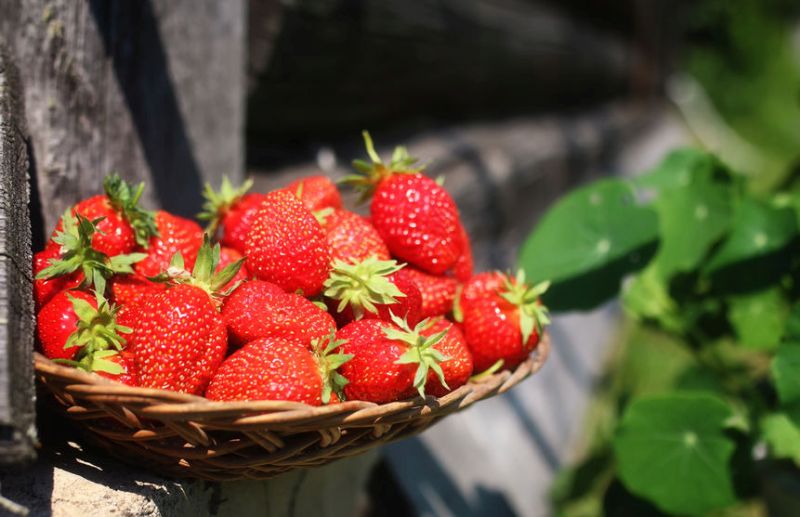
Soil sampling at a Welsh fruit and vegetable farm has demonstrated the benefits of nutrient management planning in horticulture.
Claudia Lenza grows fruit and vegetables on 7.6 hectares at Llanvihangel Crucorney in Monmouthshire.
Her main enterprise at The Fruit Farm is an orchard growing 3.2ha of dessert apples.
She also grows 0.6ha of pears together with soft fruits including strawberries, raspberries, tayberries, blackcurrants, redcurrants, gooseberries and blackberries.
There is also a 1ha vegetable patch where she grows a variety of crops including pumpkins, broccoli, beans, brassicas and salads.
Produce is mainly sold from a farm shop on site, and the farm is working towards organic certification.
To inform nutrient management planning in the orchard and soft fruit and vegetable areas, soil samples were taken strategically across the farm.
Twenty samples were taken by Dr Delana Davies, Farming Connect Technical Officer, to cover every growing zone.
She said having an accurate knowledge of the nutrient status of the soil is important in the growing of any crop, but especially so in the case of a horticulture enterprise which grows a variety of fruit and vegetables on a condensed area.
“It is important to recognise that different crops have varying nutrient requirements, and the health and productivity of the crop will depend on supplying those needs,’’ she said.
With a complete set of soil nutrient results for every growing area, detailed recommendations can be made for every plot according to the crop grown and soil balance.
Analysis of the samples taken at The Fruit Farm examined soil pH, phosphorous (P), potassium (K) and magnesium (Mg).
Optimum soil pH is vital to maximise the uptake of nutrients by the plant yet all the samples from The Fruit Farm were below the recommended target of 6.5, they ranged from 4.4 to 5.7.
“Recommendations were to apply five tonnes per hectare (t/ha) of ground limestone by top dressing the root zones in the orchards and by ploughing into the vegetable patch,’’ said Dr Davies.
One of the main roles of P in plants is to facilitate the transfer of energy; P is important for stimulating early plant growth and hastening maturity. The optimum P index for crop yield is 2 for fruit and 3 for vegetables.
Recommendations were that no inputs of P, fertilisers or organic manure, be applied to the 35% of land that was at P index 4 or higher, Dr Davies reported.
“Exceptions include crops such as leafy salads, asparagus, self-blanching celery and hops where P applications may be appropriate at index 4.’’
Soil testing also highlighted land where an excessively high P index posed a leaching risk; no fertilisers containing P should be applied until the index had fallen to 3.
K is associated with the movement of water, nutrients and carbohydrates in plant tissue with 2+ the optimum soil K index for crop yield and utilisation of other nutrients.
Soil K levels at The Fruit Farm were mostly adequate to high,only 35% of samples were slightly low.
In an organic system, a derogation from the certification body is required prior to applying approved forms of purchased potash, such as sylvinite.
A K index of 0 is normally required to demonstrate the need for the derogation, Dr Davies said.
Mg forms the central core of the chlorophyll in the plant tissue, so if it is deficient, there will be poor and stunted plant growth.
Magnesium also helps in the activation of specific enzyme systems that function to promote the plant’s normal metabolism.
The optimum soil magnesium index is 2. All samples taken from The Fruit Farm were at the target Mg index or above.
However, Dr Davies pointed out that Mg utilisation can be depressed when the K:Mg ratio is in excess of 3:1. “Several plots demonstrated such a ratio,’’ she said.
Advice given in the Nutrient Management Plan for The Fruit Farm
Apples: applying an organic approved P fertiliser such as ‘Gafsa’ should be considered. The limestone will need to be surface-applied within the root zone as there are no options to apply lime to the subsoil.
The equivalent of 1,000 kg/ha would equate to 1kg per 10 m2. Soil K index should not be built up above 2 because excessively high K levels can adversely affect storage quality.
Pears: these require an additional 70kg/ha potash. Application of an ‘approved’ organic manure which provides N, P and K would be appropriate for this crop. An organic chicken manure pellet is already used at The Fruit Farm, and applying at the rate of 1,000kg/ha would supply 15kg N, 20kg P and 20kg K.
Raspberries: this fruit requires lime as the priority. Given the requirement for magnesium at index 2, the use of magnesian limestone would be recommended for the plots.
The limestone will need to be applied on the surface within the root zone as there are no options to apply lime to the subsoil. The equivalent of 5 t/ha would equate to 0.5kg per 1m2. This should be repeated twice yearly with soil retested in year two to assess any change in pH.
Broad beans: there is no requirement for N with leguminous crops, but applying ‘Gafsa’ at 100kg/ha and 500kg/ha sylvinite would top up the balance of P and K respectively.
Leafy salads: organic chicken pellets, equivalent of 1,000 kg/ha, could be ploughed down to the root zone with additional pellets, equivalent of 500 kg/ha, applied to the top soil.
